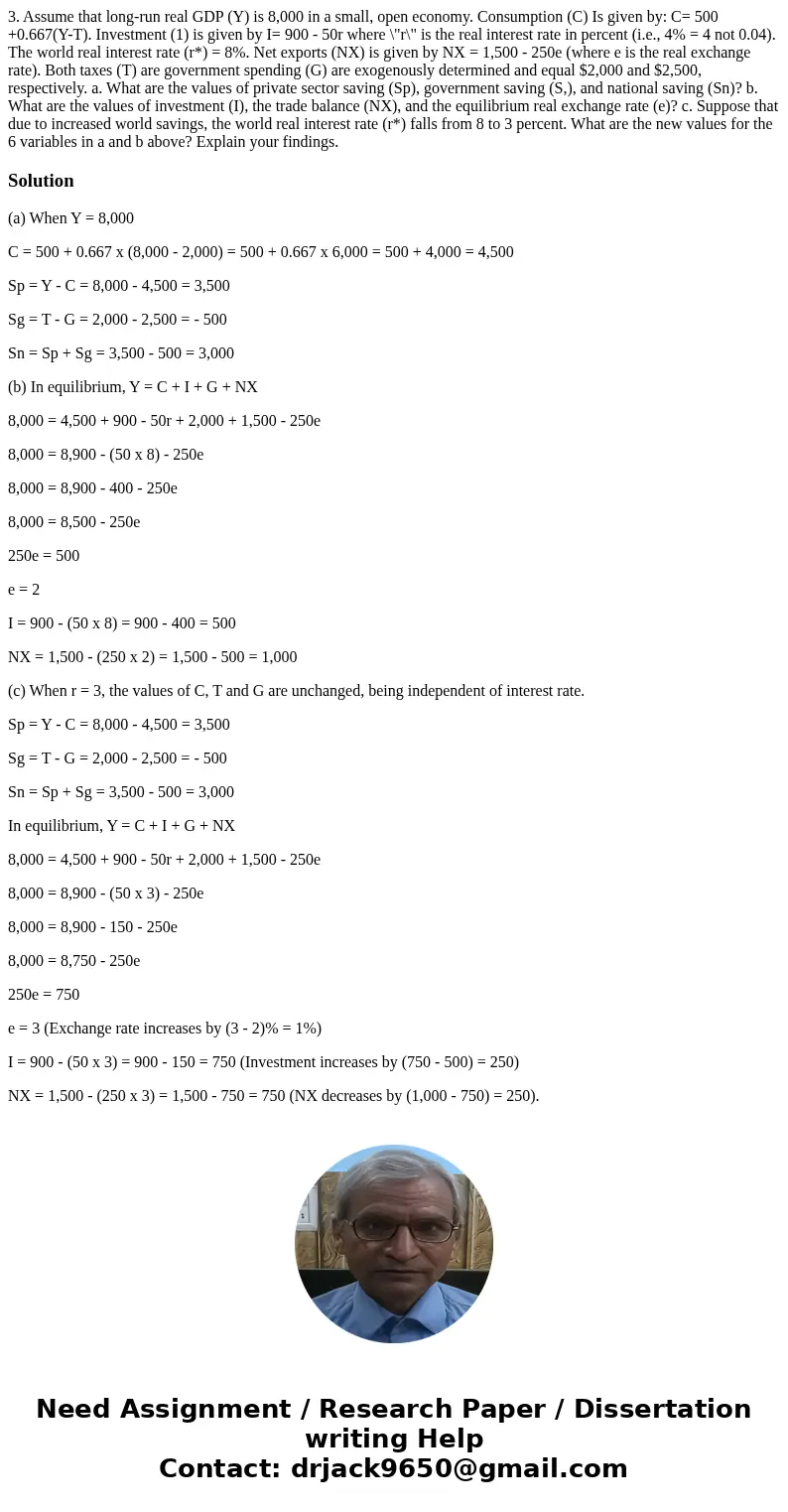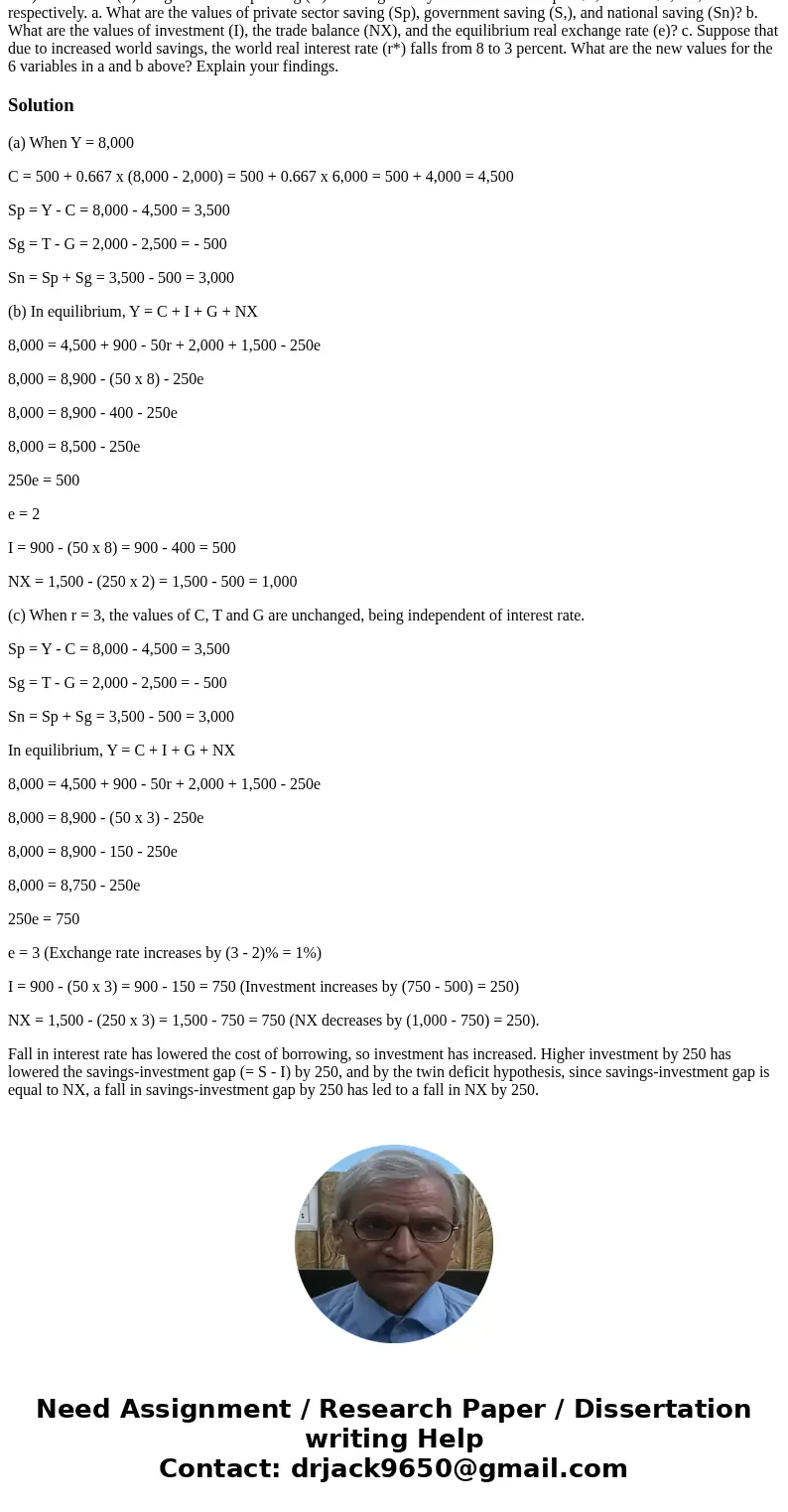3 Assume that longrun real GDP Y is 8000 in a small open eco
Solution
(a) When Y = 8,000
C = 500 + 0.667 x (8,000 - 2,000) = 500 + 0.667 x 6,000 = 500 + 4,000 = 4,500
Sp = Y - C = 8,000 - 4,500 = 3,500
Sg = T - G = 2,000 - 2,500 = - 500
Sn = Sp + Sg = 3,500 - 500 = 3,000
(b) In equilibrium, Y = C + I + G + NX
8,000 = 4,500 + 900 - 50r + 2,000 + 1,500 - 250e
8,000 = 8,900 - (50 x 8) - 250e
8,000 = 8,900 - 400 - 250e
8,000 = 8,500 - 250e
250e = 500
e = 2
I = 900 - (50 x 8) = 900 - 400 = 500
NX = 1,500 - (250 x 2) = 1,500 - 500 = 1,000
(c) When r = 3, the values of C, T and G are unchanged, being independent of interest rate.
Sp = Y - C = 8,000 - 4,500 = 3,500
Sg = T - G = 2,000 - 2,500 = - 500
Sn = Sp + Sg = 3,500 - 500 = 3,000
In equilibrium, Y = C + I + G + NX
8,000 = 4,500 + 900 - 50r + 2,000 + 1,500 - 250e
8,000 = 8,900 - (50 x 3) - 250e
8,000 = 8,900 - 150 - 250e
8,000 = 8,750 - 250e
250e = 750
e = 3 (Exchange rate increases by (3 - 2)% = 1%)
I = 900 - (50 x 3) = 900 - 150 = 750 (Investment increases by (750 - 500) = 250)
NX = 1,500 - (250 x 3) = 1,500 - 750 = 750 (NX decreases by (1,000 - 750) = 250).
Fall in interest rate has lowered the cost of borrowing, so investment has increased. Higher investment by 250 has lowered the savings-investment gap (= S - I) by 250, and by the twin deficit hypothesis, since savings-investment gap is equal to NX, a fall in savings-investment gap by 250 has led to a fall in NX by 250.


 Homework Sourse
Homework Sourse